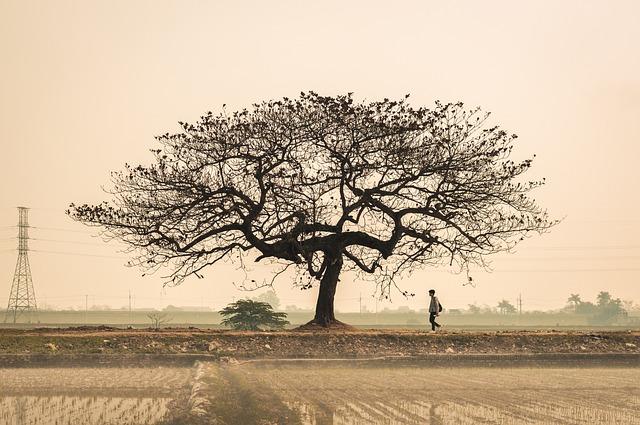In the heart of South Asia, where the rhythms of culture, politics, and history intertwine, Pakistan’s media landscape emerges as a vibrant yet complex tapestry. Over the decades, this landscape has transformed dramatically, reflecting the evolving narrative of a nation grappling with its identity and aspirations. From the exhilarating early days of liberalization that heralded a wave of independent journalism to the turbulent fluctuations of censorship and state control, the journey of press freedom in Pakistan has been anything but linear. As we delve into the intricate dynamics of this evolving media environment, we uncover the challenges and triumphs faced by journalists, the impact of technology and social media, and the delicate balance between free expression and societal norms. Join us as we navigate the multifaceted dimensions of Pakistan’s press freedoms, shedding light on the forces at play that continue to shape the voices that inform, agitate, and inspire a nation in a state of constant flux.
Exploring the Historical Context of Media Freedoms in Pakistan
The journey of media freedoms in Pakistan is intricately linked to the country’s political upheavals and cultural shifts. Following the establishment of Pakistan in 1947, the media landscape experienced periods of both encouragement and repression. The 1956 constitution made provisions for freedom of speech, yet the realities often diverged from these ideals, especially during martial law periods. Governments wielded stringent control over media narratives, manipulating public perception through censorship and intimidation. Over time, political instability and the rise of authoritarian regimes led to significant media restrictions, fostering an environment where journalists often faced threats for their vocal positions.
In recent years, however, there has been a cautious yet significant evolution in the media environment. The advent of digital technology and the proliferation of social media platforms have empowered a new generation of journalists and media outlets. Today, the rise of independent news channels and online publications is reshaping the media landscape, challenging traditional narratives and calling for greater accountability. Yet, challenges persist, as state and non-state actors continue to impose limits on freedom of expression, using legal and extralegal means to silence dissenting voices. Understanding these shifting dynamics is crucial in comprehending how media freedoms are navigated in a country where history and politics remain deeply intertwined.

Assessing Current Challenges Faced by Journalists and Media Outlets
In the ever-evolving media landscape of Pakistan, journalists and news outlets are confronted with a myriad of challenges that complicate their mission to deliver unbiased, accurate information. Censorship remains one of the most pressing issues, as both state and non-state actors continuously seek to stifle dissenting voices. This has fostered a climate of self-censorship, where journalists often think twice before airing sensitive topics, fearing repercussions ranging from threats to violence. Moreover, the proliferation of misinformation—exacerbated by social media’s rapid spread—adds another layer of difficulty, making it hard for credible sources to distinguish themselves from dubious narratives.
Additionally, financial sustainability has become a significant concern for many media outlets. The decline in traditional advertising revenue combined with the rise of digital platforms has led to increased dependency on government and private funding, which often comes with strings attached. As a result, journalists face pressure to conform to the interests of their financial backers, potentially compromising their integrity. Key challenges include:
- Safety and Security: Increased threats against journalists.
- Access to Information: Restrictions on sourcing information freely.
- Economic Viability: Struggles to maintain financial independence.

Innovative Strategies for Promoting Independent Journalism
In the quest for ensuring a robust independent journalism environment, innovative strategies are essential to counteract the pressures faced by media outlets. Crowdsourcing funding through platforms like Patreon or Indiegogo not only empowers journalists to report without constraints but also fosters a sense of community ownership in the content produced. This model of financing can help create a sustainable ecosystem where quality journalism thrives, free from commercial and political influences. Additionally, establishing partnerships with educational institutions can provide journalists with access to resources, mentorship programs, and research that enrich their reporting while also offering students real-world learning opportunities.
Digital literacy campaigns are equally vital in promoting independent journalism, as they equip citizens with the skills to critically evaluate news sources. By conducting workshops and seminars, organizations can engage the public in discussions about the importance of fact-checking and media ethics, helping them discern credible information from misinformation. Furthermore, leveraging social media responsibly can amplify the reach of independent journalists. By encouraging audience participation and facilitating discussions, these platforms can serve as a powerful tool in democratizing the media landscape, making diverse voices more prominent while breaking the traditional gatekeeping barriers.

Cultivating a Supportive Environment for Press Freedoms and Accountability
Creating a nurturing atmosphere for press freedoms hinges on several crucial factors that promote independent journalism and enhance public accountability. Media literacy plays a vital role; it empowers citizens to discern credible information from misinformation, fostering a culture of critical thinking. By enhancing education on media consumption, communities can better appreciate the value of an independent press, which in turn pressures authorities to uphold journalists’ rights. Furthermore, engaging civic organizations can act as watchdogs, championing journalists’ concerns and advocating for legal frameworks that bolster freedom of expression.
In this evolving media landscape, collaboration between various stakeholders is essential. Journalists, civil society, and government bodies must unite to establish guidelines that protect press freedoms without stifling necessary accountability. Building alliances can facilitate transparency initiatives, ensuring that media outlets operate not only with the intent of reporting the truth but also with respect for ethical standards. For tangible progress, we can look at a few statistical measures that highlight expectations for press environment reforms:
| Indicator | Current Status | Desired Outcome |
|---|---|---|
| Press Freedom Index | Ranked 145th | Top 100 |
| Journalist Attacks | Increased incidents | Reduction by 50% |
| Public Trust in Media | 45% | 70% |
The Conclusion
In the ever-shifting sands of Pakistan’s media landscape, the journey through the valleys of press freedom is both complex and compelling. As we step away from the intricacies of laws, regulations, and ethical dilemmas, it becomes clear that the heart of journalism in Pakistan beats with resilience and a fervent desire for truth.
While obstacles abound—ranging from governmental pressures to societal challenges—the courageous voices that rise above the noise highlight a commitment to transparency and accountability. The evolution of media freedoms reflects not just changes in policy, but also the indomitable spirit of a society grappling with its identity and the role of information in shaping its future.
As we look ahead, the path will undoubtedly remain fraught with challenges, yet it is also ripe with opportunities for innovation and dialogue. The interplay between technology, regulation, and the pressing need for a free press will shape the next chapters of Pakistan’s story. It is a narrative not only of struggle but also of hope—where every article published, every voice raised, and every truth unveiled enriches the fabric of democracy.
In understanding the dynamics of this evolving landscape, we are reminded that the pursuit of press freedom is not merely a battle fought in newsrooms or courtrooms, but a vital endeavor that enriches the very essence of democratic values. As observers and participants in this ongoing narrative, we must continue to advocate for a space where ideas can flourish, dissent can thrive, and the media can serve as a true mirror to society—a platform where every voice matters. Thus, the story of Pakistan’s media is one that invites engagement and awareness, echoing a collective call for the right to inform and be informed.



